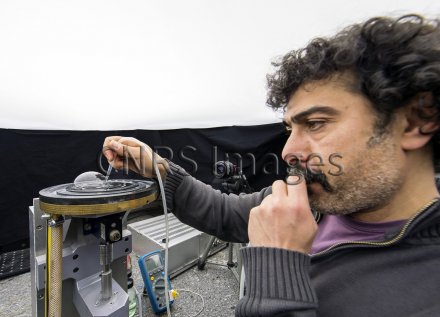Production year
2014

© Cyril FRESILLON/LOMA/CNRS Images
20140001_0889
A researcher blows into a tube to create a soap bubble on a heated rotating brass disk. Heat creates a thermal convection effect on the surface of the bubble. These flow simulations approximate as closely as possible a simple model of atmospheric flow, as soap bubbles reproduce the curvature of the atmosphere. The vortices obtained are comparable to tropical cyclones. The rotation rates of the bubble vortices help determine their path and intensity. The relationship obtained can be used to study variations in cyclone intensity and predict their trajectory.
The use of media visible on the CNRS Images Platform can be granted on request. Any reproduction or representation is forbidden without prior authorization from CNRS Images (except for resources under Creative Commons license).
No modification of an image may be made without the prior consent of CNRS Images.
No use of an image for advertising purposes or distribution to a third party may be made without the prior agreement of CNRS Images.
For more information, please consult our general conditions
2014
Our work is guided by the way scientists question the world around them and we translate their research into images to help people to understand the world better and to awaken their curiosity and wonderment.